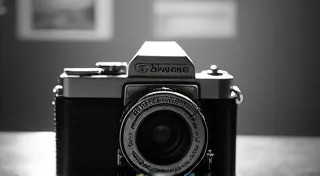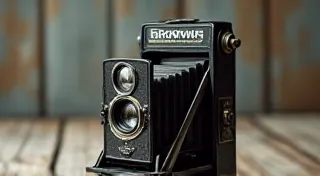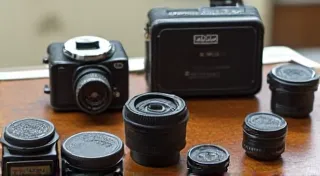Brownie Cameras in Pop Culture: Appearances in Films and Literature
The Kodak Brownie camera, introduced in 1900, wasn't just a revolutionary tool for accessible photography; it became a cultural icon. Its affordability and ease of use meant that snapshots, once the domain of professionals, were now in the hands of everyday people. This ubiquity led to the Brownie’s frequent appearances in films and literature, subtly or overtly reflecting the changing times and the rise of personal documentation.
Early Appearances: Innocence and Discovery
In the early decades of the 20th century, the Brownie often symbolized childhood and simple pleasures. Think of the era of silent films - the grainy, often grainy imagery often depicted children playing with a Brownie, capturing fleeting moments of joy and wonder. These were images of a quickly changing world, yet also a world retaining a sense of gentler times. Though specific documented instances are sometimes hard to confirm, the visual language of the period frequently featured such scenes. The camera, small and unassuming, became a stand-in for the act of capturing memories, a burgeoning practice facilitated by Kodak’s innovation. The influence was so profound that it shaped an entire aesthetic, influencing how everyday life was portrayed and remembered.
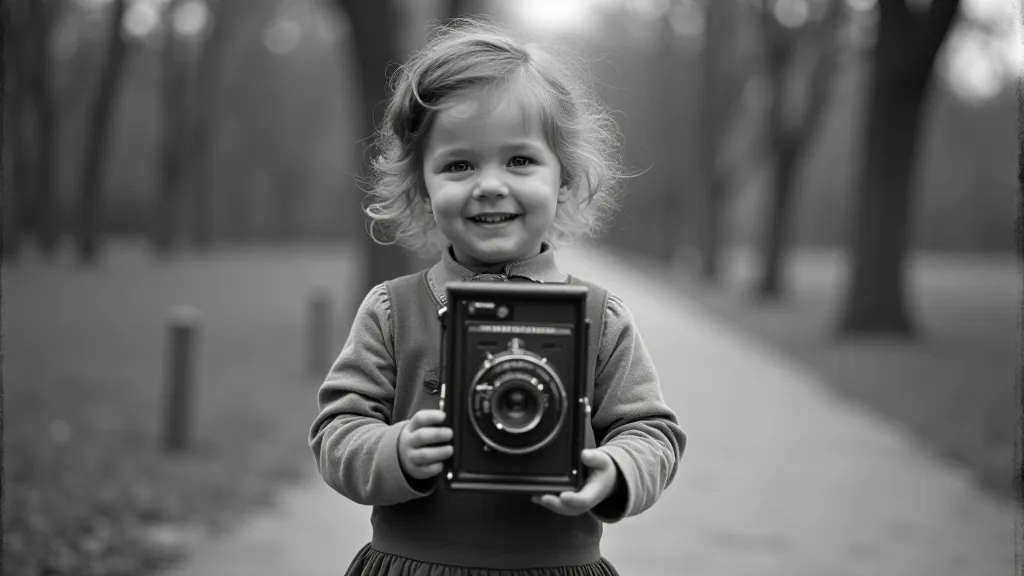
Mid-Century Memoirs: Documenting the American Dream
As the Brownie became more integrated into daily life, its presence in literature and film evolved. In mid-century American novels and films, the Brownie often represented the “everyman” – a tool used to document vacations, family gatherings, and everyday experiences. It reflected a desire to preserve moments of domestic bliss and demonstrate a growing interest in self-representation. Families meticulously curated photo albums, filled with Brownie snapshots that served as tangible records of their lives – vacations to burgeoning national parks, Sunday dinners, and childhood milestones. These weren't just pictures; they were narratives, carefully constructed to reflect a particular vision of the American dream. The simple act of taking a photo with a Brownie, then, became a small act of claiming a piece of that dream. Examining these albums today offers a fascinating glimpse into the social and cultural values of the era. Many aspiring photographers started their journey with these simple cameras, often relying on guides and instruction available at the time. Understanding the intricacies of older photographic equipment and techniques is key to truly appreciating these cameras, and resources like Photographing with Vintage Brownie Cameras can offer invaluable tips and tricks for achieving great results.
While direct mentions are sometimes scarce, the visual cues were common - a snapshot album resting on a coffee table, a family portrait taken with a box camera – these subtle nods reinforced the Brownie’s role as a familiar and comforting element of the mid-century home. The accessibility of these cameras meant that practically anyone could participate in documenting their lives, creating a shared visual culture that was both personal and widespread. Understanding the nuances of different Brownie camera accessories, such as filters and cases, can deepen one's appreciation for the craft and ingenuity of the era.
Later Appearances: Nostalgia and Commentary
In later films and literature, the Brownie camera often takes on a more complex role. Sometimes, it represents nostalgia for a simpler time, a longing for the authenticity of analog photography in a digital age. Occasionally, it serves as a symbolic prop, hinting at a character's backstory or suggesting a theme of remembrance and loss. The grainy quality of Brownie photos can be intentionally used to evoke a sense of faded memory or to create a visual contrast with more modern imagery. Directors often employ this deliberate visual aesthetic to establish a specific tone or to signify a character’s connection to the past. The low resolution and limited functionality of the Brownie, once considered drawbacks, became artistic assets, lending a unique charm and intimacy to cinematic storytelling.
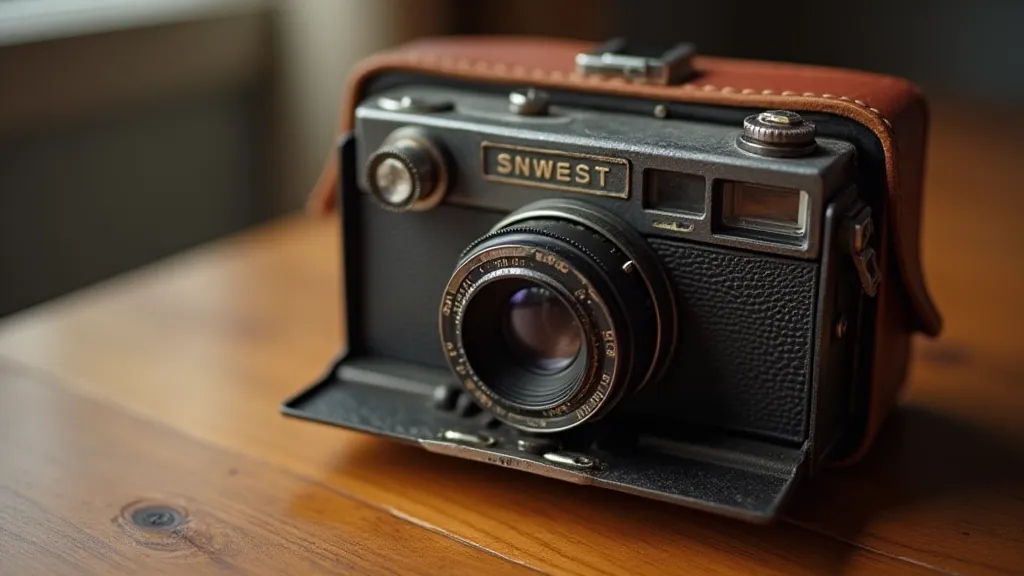
The Evolution of Brownie Photography and its Technical Aspects
The core appeal of the Brownie wasn's solely aesthetic. Its simplicity allowed users to concentrate on composition and capturing the moment. For those seeking to unlock the full potential of these vintage cameras, it's often necessary to consult historical documentation and learn proper techniques. Finding accurate Brownie Camera Manuals can be surprisingly challenging, but these resources provide invaluable insight into the camera’s functionality, film loading procedures, and troubleshooting tips. The knowledge contained within these manuals allows users to appreciate the level of sophistication packed into these seemingly basic tools.
Many aspiring photographers began their journey with a Brownie, developing a keen eye for light and shadow. The process of understanding how to properly load film, adjust for varying lighting conditions, and compose visually appealing images with limited camera settings fostered a deep appreciation for the fundamentals of photography. This foundational knowledge often laid the groundwork for later exploration of more advanced photographic techniques and equipment.
Beyond Direct Mentions: The Cultural Impact
It’s important to note that the influence of the Brownie extends beyond explicit mentions in films and books. The camera’s impact on photography itself – its democratization of the medium – is a significant contribution to visual culture. The “snapshot aesthetic” – that casual, unposed, and often imperfect style – owes a great deal to the Brownie's early popularity and the way it encouraged everyday people to document their lives. It paved the way for the rise of photojournalism and street photography, and its legacy can be seen in contemporary visual storytelling. Considering the variations in Brownie camera film formats throughout the years, from the original 127 to later variants, showcases how Kodak continually adapted to consumer demand and technological advancements. It also highlights the subtle shifts in photographic styles and preferences throughout the 20th century.
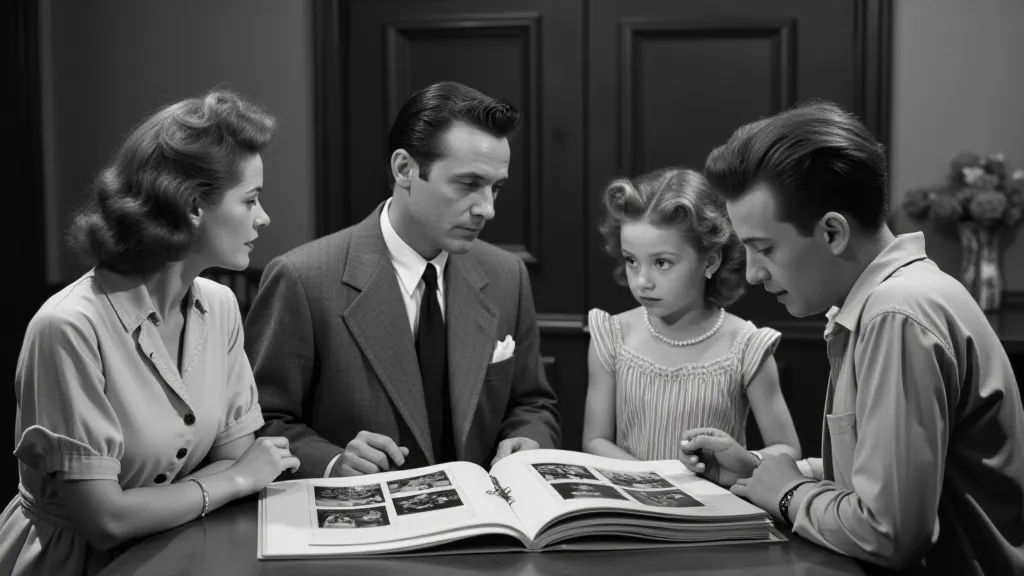
The Brownie’s Enduring Legacy in Film and Literature: Case Studies
While pinpointing specific instances of the Brownie's appearance in films and literature can be challenging due to the subtlety of its inclusion, several examples demonstrate its cultural significance. In many mid-century films depicting suburban life, a Brownie camera can be seen resting on a windowsill or displayed on a mantelpiece, subtly reinforcing the themes of domesticity and Americana. Similarly, in numerous novels set during the same period, characters often rely on Brownie cameras to document their travels and family events. The camera serves as a silent witness to their lives, capturing moments of joy, sorrow, and everyday beauty. Moreover, the distinctive aesthetic produced by these cameras, with their characteristic graininess and limited color palette, often adds a layer of authenticity and nostalgia to these depictions of the past. The grainy quality and limited capabilities forced photographers to be more creative and resourceful, often leading to surprisingly evocative and artistic results.
Valuing Your Vintage Brownie Camera: More Than Just Nostalgia
Beyond their cultural significance and aesthetic appeal, vintage Kodak Brownie cameras have become increasingly sought-after by collectors. The value of a Brownie isn't solely determined by its functionality, but rather by a confluence of factors including its model, condition, rarity, and originality. Early models and those in exceptional condition command higher prices, as do cameras with original boxes, instructions, and accessories. Understanding these nuances is essential for both collectors seeking to expand their holdings and individuals looking to sell their vintage Brownies. A well-preserved Brownie can be a valuable piece of photographic history, reflecting a specific moment in time and technological innovation.
Conclusion
The Kodak Brownie’s legacy isn't just about the camera itself, but about the cultural shift it sparked. Its appearances in films and literature – both direct and subtle – reflect that evolution, from a symbol of childhood innocence to a reminder of a rapidly changing world. Collecting and appreciating vintage Brownies isn't just about owning a piece of photographic history; it's about connecting with a cultural phenomenon that helped shape how we see ourselves and the world around us. The Brownie democratized photography, allowing countless individuals to capture and share their experiences, ultimately contributing to a richer and more diverse visual record of the 20th century and beyond. Its impact continues to resonate today, inspiring photographers and filmmakers to embrace the charm and authenticity of analog photography.
